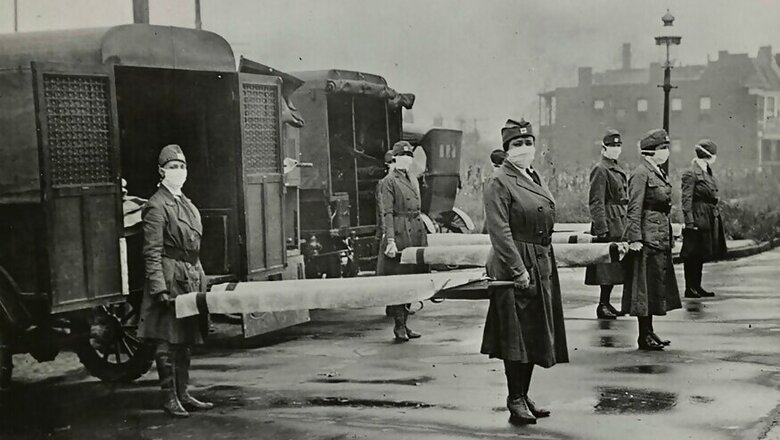
views
Does all influenza virus cause higher mortality amongst the aged? Well, not necessarily.
The elderly in general are considered more vulnerable to the common flu, which returns every year in a mutated form. Age-wise morbidity figures for Covid-19 also suggest a similar trend; that people with co-morbidities, especially the ones who are 65 years and above, need to take extra care to escape the wrath of the pathogen.
The theory is reinforced by the 1968 influenza pandemic, which reportedly started in Hong Kong. It killed over 1 million people worldwide and most causalities were among those aged 65 years and above.
But the biggest pandemic of the last century, the Spanish Flu, interestingly did not conform to the age-wise mortality patterns registered during other epidemics and pandemics.
Like Covid-19, the Spanish Flu pathogen was a novel coronavirus which attacked the respiratory mechanism of an infected person. The similarity between the two ends here.
Epidemiological research on the 1918 Spanish flu illustrates the microbe which killed over 50 million people at the end of the World War I was most virulent when the victims were in the prime of their youth. Similar trends of age mortality were registered even in India where revised estimates suggest a death toll between 12 and 20 million in three waves of the disease spread over two years, beginning 1918 autumn.
Worldwide, the peak mortality registered during Spanish flu pandemic was 28 years. The virus inflicted maximum damage for those aged between 25 and 40 years. Those outside this age group showed much better resistance to the disease.
A research in 2013 examined the curious case of old and the aged faring better on contracting the disease. The paper concluded that high mortality among young patients may be attributed to “immunological memory to a specific influenza strain early in life” which disrupted the immune response on exposure to a novel coronavirus like the Spanish Flu.
In simple terms, researchers suspected an earlier exposure to a certain virus may have left an imprint on the immune system of a section of patients. In-built defence mechanism against foreign elements in these people had been programmed to evoke inadequate response to combat the disease.
Another research published in 2001 ascribed low mortality among the aged during the 1918 pandemic to a strain of a similar virus which may have infected this age group in their childhood or adolescence. The paper suggests this exposure to the pathogen may have set in a defence mechanism which helped mitigate the impact of disease in this particular segment during Spanish Flu pandemic.
Since those above 40 years of age showed stronger resistance to the disease, it may be deduced that the exposure to Spanish Flu like virus in 40 plus patients may have happened before 1885.
Covid-19 has so far proved to be more fatal for the old with co-morbidities. Fatality rate for Covid-19 patients above 80 years is almost 18%. It reduces by almost half in the age group for 70 to 80. Less than 1% mortality has been registered in people below 50 years.


















Comments
0 comment